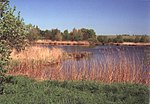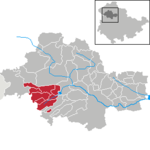Oppershausen
Municipalities in ThuringiaThuringia geography stubsUnstrut-Hainich-Kreis

Oppershausen is a municipality in the Unstrut-Hainich-Kreis district of Thuringia, Germany.
Excerpt from the Wikipedia article Oppershausen (License: CC BY-SA 3.0, Authors, Images).Oppershausen
Vogtei
Geographical coordinates (GPS) Address Nearby Places Show on map
Geographical coordinates (GPS)
| Latitude | Longitude |
|---|---|
| N 51.133333333333 ° | E 10.45 ° |
Address
99986 Vogtei
Thuringia, Germany
Open on Google Maps









